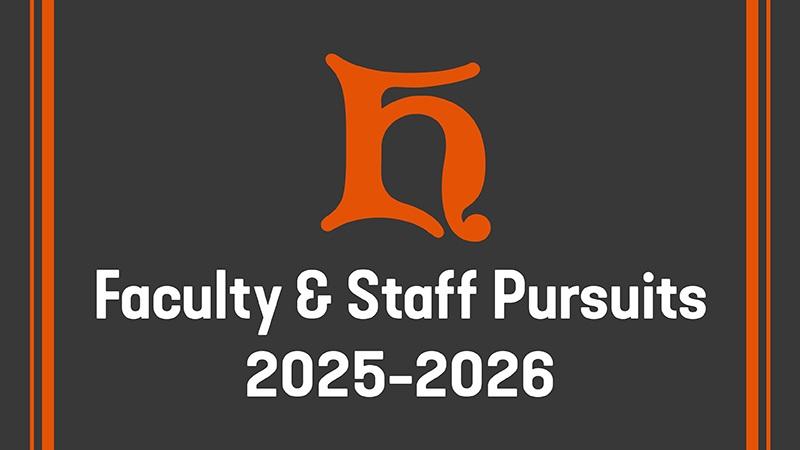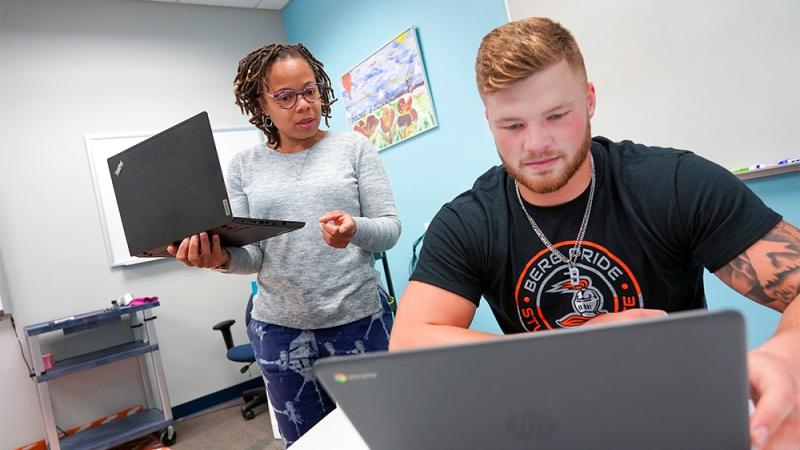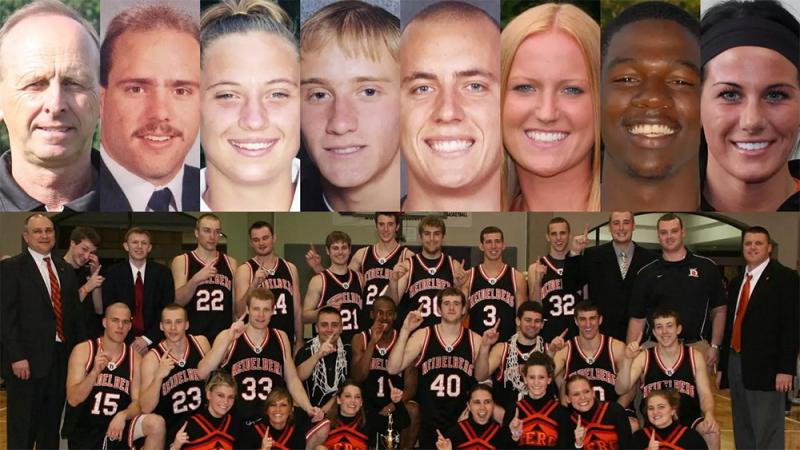Genocide expert visits ’Berg: ‘Diplomacy must continue’
On Tuesday morning, local middle school and high school students and Heidelberg students alike gathered to learn about modern instances of genocide, the horrors that it causes, and what is being done to combat ongoing genocides and prevent them in the future.
The Lichtman-Behm Genocide Lecture Series gives an annual lecture by an expert or a survivor of genocide. The series began in the early 2010s, when the late Don Behm ’51, a World War II veteran who helped to liberate the Mauthausen concentration camp, and Jimmy Lichtman, a survivor of the Mauthausen/Gusen concentration camps, decided to share the truth about the horrors they witnessed in order to raise awareness and prevent further genocides.
This year, the Heidelberg community heard from Peter Van Arsdale, who has his doctorate in applied and cultural anthropology, and is now retired from a teaching career at the University of Denver. He shared with students the ongoing atrocities of the Sudan genocide. He had visited Sudan prior to the worst of the fighting breaking out, and shared pictures he had personally taken of the land and people, detailing the context for which this particular genocide began.
The Sudan genocide is a genocide in two parts, beginning in the early 2000s, and fading away, only to come back into full force in the past few years, Van Arsdale explained. In the early 2000s, thousands upon thousands of Sudanese people were victims to mass killings, burned villages and horrendous violence. Millions were displaced or affected by the violence.
Van Arsdale recalled the story of a woman, a young mother, traveling in a group to seek refuge in the northern country of Chad. She had her 2-year-old son on her back, when her group was captured by the Rapid Support Forces (RSF) of Darfur, a paramilitary group that grew out of the pan-Arabist organization known as the Janjaweed or “the Devils on Horseback.” The RSF separated the men and the women from the group, telling them that “No man can escape to Chad.” With that, one of the RSF members shot and killed the 2-year-old. “He wasn’t a man,” Van Arsdale said of the tragedy, “he was a baby.” In spite of the ominous nature of this story, it was a necessary truth to hear about genocides. “When you hear these numbers, 300,000, 500,000 dead, we can’t wrap our brains around it. But don’t let the numbers fog the pain of this loss of human life,” he said. “I don’t have to tell you this, but every person counts. One person killed is one person too many.”
What can cause such cruelty and disregard for human life to exist within fellow human beings, he asked rhetorically? At the face of the fight is a conflict between Sudanese Arabs and Black Sudanese people, a strain of violent racism that turned into ethnocide. However, as Van Arsdale pointed out, there are always more factors to this type of violence than what can be seen on the surface.
The people of Sudan are resilient. Sudan is mostly desert, with few trees – the trees that do exist don’t look quite alive. However, even trees that look strangely dead to us in the West are alive and capable of feeding the people of Sudan. “This tree is like the desolate but resilient lives of these people,” he said Those Sudanese people who have cattle, like the Nomadic members of the Rapid Support Forces, are wealthy and able to sustain themselves for long periods of time. Those who live in sedentary villages are the other of the country, poor and stuck relying on the unfruitful land to feed them. The famines that Sudan experienced in 1993 and 1998 only helped to further light the fires that would soon explode into civil war.
Sudan, although poor in food and water, is rich in minerals. Oil, copper, uranium and gold bring outside forces into play. Even the Russian Wagner group that has recently made the news has come to visit Sudan, interested in the gold there. Sudan is also rich in gender-based violence and an inequitable treatment of women and children, who are discussed like any other resource that the Sheik of the village would have as a political concern.
In summary, there are a variety of issues that have created the context in which this tragedy is occuring. Interethnic issues, racism, colorism, gender-based violence, scarcity of the four most important resources (and human rights: food, water, shelter and sanitation), geographic politics that centralize the powerful and literally push the other into the periphery. Those who centralize themselves in the government of Sudan want to take over all of Sudan, and although there is much talk of democracy, there is little willingness to share the government. All of these issues compound the “culture of terror” that paramilitants like the RSF work to create. “When we ask why or what’s the intent, which is one of the biggest questions we ask today, the answer is simple. The intent is to exterminate, and maybe to take the land, gold, cattle that those dead have left behind,” Van Arsdale explained.
And although he is not confident in a quick resolution, he does have hope in the number of people trying to do good. There were efforts to establish a power-sharing government in Sudan, United Nation and African Union peacekeepers helping at the sidelines, small scale truces enacted by local activists and religious leaders. In 2023, Linda Thomas-Greenfield, a United Nations ambassador, visited the refugee camps of Chad, where many Sudanese now reside, and insisted that humanitarian aid will continue and sanctions are placed on those responsible. There are ongoing field reports of shortages and needs, non-governmental organizations working in camps, and reporting from crisis groups like Act 4 Sudan, keeping people informed of the crisis and ways they can help. A group called Team ZamZam has been responding to gender-based violence in Sudan for the past four years, helping survivors. And in the United States, student researchers and activists maintain communications with Sudan, hold vigils for those lost, and petition Congress for action. Van Arsdale brought pamphlets for the Coalition Against Global Genocide, which he is proud to represent.
So although the ominous realities of genocide are still very real in our current world, there are more ways than ever to help and support those doing the work to help. Through the interconnectedness that has increased exponentially in the past 30 years, even high school students can do something about genocide. Those who attended Van Ardsale’s talk have already taken the first steps, by educating themselves and asking questions about what can be done. “We can never stop with diplomacy,” he said of the efforts. “The war is going on, people are suffering. Diplomats must keep trying.”




